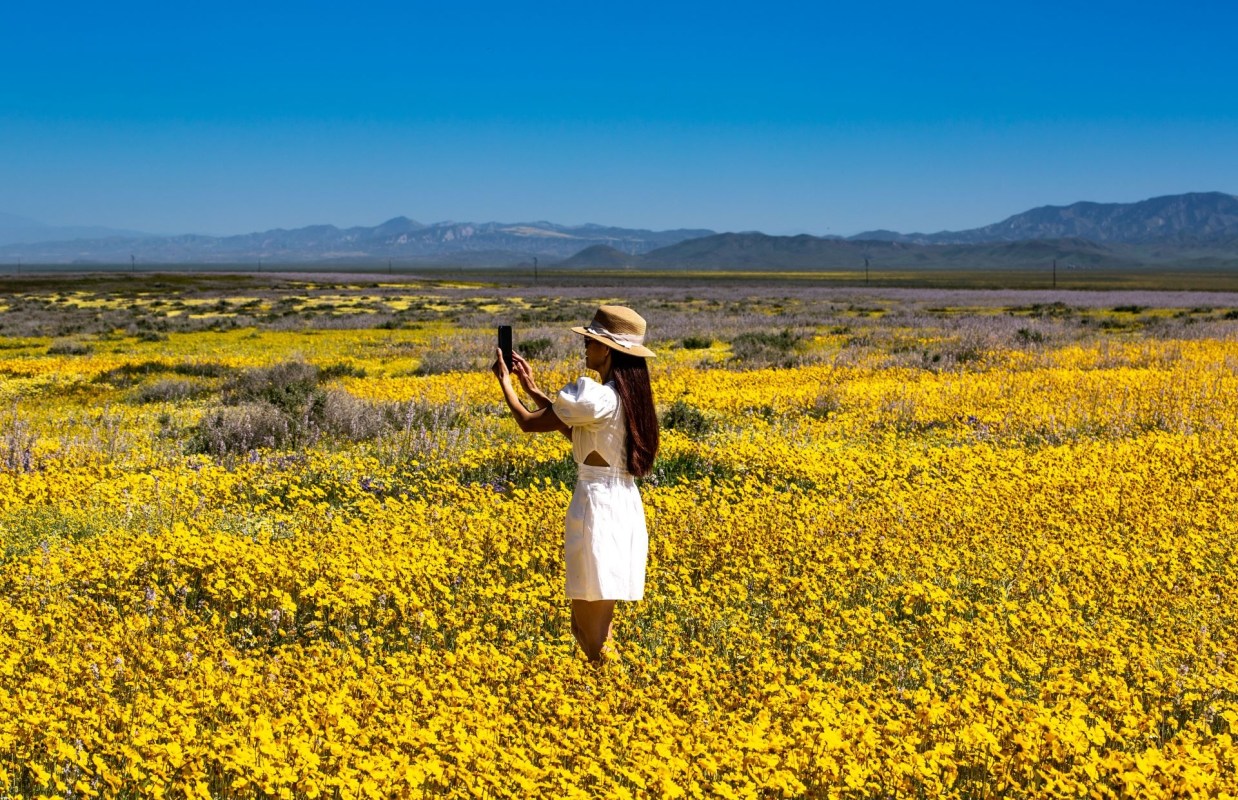Nature is the artist, and California is the canvas, with a massive "super bloom" of wildflowers now coloring the state.
What is the California super bloom?
California is experiencing epic wildflower blooms spanning from the deserts near San Diego through the meadows north of Sacramento, the New York Times reported. This explosion in color is a result of the torrential downpours and massive blizzards this winter.
While the intense rain caused mudslides and flooding, and the blizzards trapped many people inside their homes, the precipitation delivered relief to a state experiencing an ongoing drought. The bonus? All of that moisture germinated wildflower seeds throughout California.
Super blooms only occur after a particularly wet season, and California has not experienced one on such a large scale in four years. In drier years, wildflower seeds sit dormant, waiting for rain so they can bloom.
And blooming they are. Orange California poppies have set Antelope Valley aglow just north of Los Angeles. Meanwhile, yellow goldfields and purple phacelia color the Carrizo Plain National Monument. These blooms are so expansive that they can even be seen in recent satellite images.
Why is the super bloom getting so popular?
This explosion of floral color across California has attracted hordes of Californians eager to take photos against a colorful wild backdrop.
But its popularity is also its downfall. In 2019, during a past bloom, many visitors trampled wildflowers at places like the Walker Canyon trail at Lake Elsinore, which now has bare patches among this year's orange flowers.
"By allowing the massive crowds that happened in 2019, the bloom is seeing impacts," Lake Elsinore Mayor Natasha Johnson told The New York Times. "What you're seeing isn't as spectacular."
This year, park rangers are limiting the number of daily visitors to protect the area. Not everyone thinks this is a good idea, however. Evan Payne, director of the Theodore Payne Foundation, told The New York Times that officials must implement better strategies to help more people experience "this amazing gift from nature."
The super bloom is more than just pretty scenery — it's also a win for those who study plants. Heather Schneider, a rare plant biologist with the Santa Barbara Botanic Garden, conducts research at the Carrizo Plain.
TCD Picks » Upway Spotlight
💡Upway makes it easy to find discounts of up to 60% on premium e-bike brands
She said this year's super bloom has allowed her to study ecosystems similar to those that may be lost to development or agriculture in other areas. This prolonged bloom will likely give Schneider and other researchers more opportunities to study the wildflowers.
"This is how we feed our souls," she told The New York Times.
Join our free newsletter for cool news and cool tips that make it easy to help yourself while helping the planet.














